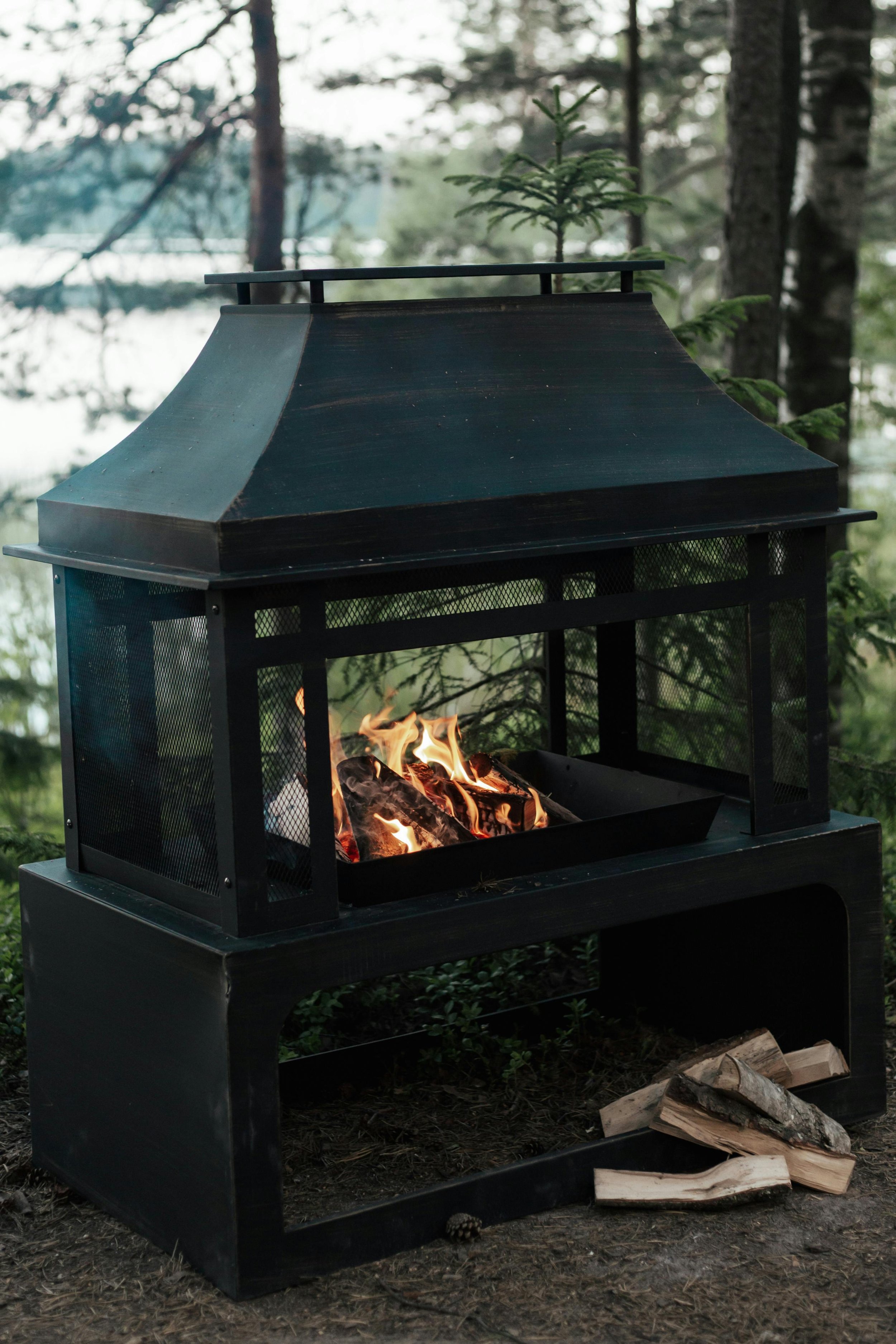How to Install an Outdoor Outlet: Step-by-Step Guide
Need power outside? Learn How to Install an Outdoor Outlet: Step-by-Step Guide to safely and effectively add an outlet to your exterior space. Perfect for all your outdoor electrical needs!
Whether you're setting up festive holiday lights, powering a lawnmower, or creating an outdoor entertainment zone, having an outdoor outlet can make life a whole lot easier. But how do you go about installing one yourself? While it might seem like a daunting task, installing an outdoor outlet is a manageable DIY project if you follow the right steps and precautions.
In this article, we'll guide you through How to Install an Outdoor Outlet: Step-by-Step Guide, covering everything from planning and safety precautions to wiring and weatherproofing. By the end, you'll have the knowledge and confidence to power up your outdoor space like a pro. Ready to get started? Let’s dive in!
How to Install an Outdoor Outlet: Step-by-Step Guide
1. Planning Your Outdoor Outlet Installation
Before you break out the tools, a little planning is essential to ensure your installation goes smoothly and safely.
Determine the Outlet Location
Start by deciding where you want your outdoor outlet. Consider:
Proximity to Existing Power Source: The closer your outdoor outlet is to an indoor outlet or circuit box, the simpler and more cost-effective the installation will be.
Accessibility: Ensure the outlet is conveniently located and easy to reach for plugging in appliances or devices, enhancing accessibility and usability.
Weather Exposure: Select a location that's sheltered from the elements, or use a weatherproof cover to protect the outlet from rain and moisture.
Check Local Building Codes and Permits
Before starting any electrical work, especially for outdoor installations, ensure you're aware of and compliant with local regulations, as permits are often required and strict codes must be followed. This step is crucial for safety and legal reasons, so it's important to verify all guidelines and obtain the necessary permits before you begin.
Gather Your Tools and Materials
You’ll need a few essential tools and materials for this project:
Outdoor-Rated Electrical Box: Make sure the outlet and all components are specifically designed for exterior use to ensure safety and durability.
GFCI Outlet: Ground Fault Circuit Interrupter outlets are required for outdoor use to prevent electrical shock.
Weatherproof Cover: A weatherproof cover protects the outlet from rain and moisture, ensuring it remains safe and functional in outdoor conditions.
Electrical Cable: Use outdoor-rated, 12-gauge wire (or thicker, depending on your circuit).
Drill and Bits: For making holes in your wall.
Fish Tape: Use a fish tape or wire puller to guide wires through walls, ensuring they navigate smoothly without damaging the structure.
Wire Strippers, Pliers, Screwdrivers: Use wire nuts or terminal blocks for making secure and reliable electrical connections, ensuring all wires are tightly joined and insulated.
Circuit Tester: Always use a voltage tester to confirm the power is off before starting any electrical work, ensuring your safety.
2. Turn Off the Power
Safety first! Always make sure the power is off before working with electrical components.
Locate Your Circuit Breaker
Locate the breaker that controls the circuit you'll be working on by checking the labels in your breaker box. Each breaker should be clearly marked to indicate which area or appliance it powers. Turn off the appropriate breaker to cut power to the circuit before starting any work. If the labels are unclear or missing, use a voltage tester to double-check that the power is off.
Turn Off the Power
Flip the breaker switch to the "off" position, then use a circuit tester to confirm that no power is flowing to the outlet you plan to connect to. This crucial step ensures your safety by preventing accidental electrical shocks or injuries. Never skip this verification process; your well-being depends on making sure the circuit is completely de-energized before you begin working.
3. Install the Outdoor Electrical Box
With the power off and your tools ready, it’s time to install the outdoor electrical box.
Drill a Hole for the Electrical Cable
Choose the Right Spot: Drill a hole through the wall where the outdoor box will be installed. Make sure the hole is large enough to accommodate the electrical cable but not so big that it compromises the structure.
Angle the Hole Downward: Seal any gaps where the cable enters your home to prevent water from running along the cable and seeping inside. This step is essential for avoiding water damage and maintaining safety.
Mount the Electrical Box
Feed the Cable: Thread the outdoor-rated electrical cable through the hole you drilled, ensuring you leave enough slack to easily connect it to the outlet inside the box. This allows for a secure and flexible installation.
Secure the Box: Attach the outdoor electrical box to the exterior wall using screws, ensuring it is level and firmly secured. This step is crucial for a stable and safe installation. Double-check the alignment before tightening the screws to avoid any misalignment or movement.
4. Run the Electrical Cable
Now that your box is in place, it’s time to run the electrical cable from your power source to the outdoor outlet.
Access the Indoor Power Source
Choose an Existing Outlet or Circuit: Connecting your outdoor outlet to an existing indoor outlet or directly to the circuit breaker is the most straightforward method, especially if the distance is minimal. This approach simplifies wiring and can help reduce installation costs, as it often requires fewer materials and less labor. Ensure the connections are secure and comply with local codes.
Remove the Outlet Cover: Unscrew and carefully remove the cover of the indoor outlet to access the wiring. Make sure the power is off before proceeding. This will allow you to connect the new outdoor wiring to the existing outlet, ensuring a safe and functional installation for your outdoor outlet.
Run the Cable
Use Fish Tape: Feed the fish tape through the wall from the indoor outlet to the outdoor box. Attach the electrical cable to the fish tape and gently pull it back through the wall. This method helps guide the cable through the wall cavity, ensuring a smooth and efficient installation.
Strip the Wires: Use wire strippers to remove about ¾ inch of insulation from the ends of the black (hot), white (neutral), and green or bare (ground) wires. This exposed section of the wires will be used to make connections with the corresponding wires in the outlet box for a secure installation.
Connect the Wires
Connect to the Indoor Outlet: Attach the black wire to the brass terminal, the white wire to the silver terminal, and the green or bare wire to the ground screw inside the indoor outlet box. Ensure each wire is securely connected and tightened to prevent any loose connections that could cause electrical issues.
Secure the Connections: Tighten all screws to secure the connections, then carefully tuck the wires back into the outlet box. Replace the cover and screw it in place, ensuring everything is properly aligned and secured before moving on to the next step.
5. Wiring the Outdoor Outlet
With the cable run and connected inside, it’s time to wire the outdoor GFCI outlet.
Wire the GFCI Outlet
Attach the Wires: Connect the black wire to the brass “line” terminal, the white wire to the silver “line” terminal, and the green or bare wire to the ground screw in the outdoor electrical box. Ensure each connection is tight and secure to prevent any electrical issues.
Secure the Connections: Tighten the screws to ensure everything is secure. Give the wires a gentle tug to confirm they’re firmly connected and won’t come loose. This step helps prevent any future electrical issues and ensures a stable and safe connection.
Install the Outlet in the Box
Position the Outlet: Carefully tuck the wires into the electrical box, making sure they’re not pinched or strained. Then, mount the GFCI outlet inside the box using the screws provided. Ensure the outlet is level and securely fastened to prevent any movement or loose connections.
Attach the Cover: Secure the weatherproof cover to the electrical box, ensuring a tight seal to keep out moisture. Check that the cover fits snugly and is properly aligned to prevent any gaps where water could enter. This step is crucial for protecting your outdoor outlet from the elements.
6. Testing and Final Touches
Before you declare victory, you need to make sure everything’s working safely and correctly.
Restore Power
Flip the Breaker Back On: Return to the breaker box and flip the switch back to the "on" position. This will restore power to the circuit and activate your new outdoor outlet. Check the outlet with a tester to confirm that it's functioning correctly. If everything is in order, your installation is complete!
Test the Indoor Outlet: Use a circuit tester to ensure power is flowing correctly to the indoor outlet. Plug the tester into the outlet and check for proper voltage readings. If the tester indicates that power is flowing as expected, your connections are likely secure. If not, recheck the wiring for any issues.
Test the Outdoor Outlet
Test the GFCI Function: Press the “test” and “reset” buttons on the GFCI outlet to ensure it’s functioning correctly. The outlet should trip when you press “test” and reset when you press “reset.” If it doesn’t operate as expected, there may be an issue with the installation that needs to be corrected before use.
Plug in a Device: Finally, plug in a small appliance or device to verify the outlet is supplying power correctly. If the appliance works without issues, the installation is complete. If not, double-check your connections and the GFCI functionality to troubleshoot any potential problems.
7. Maintaining Your Outdoor Outlet
Once your outlet is up and running, a little maintenance will keep it working well for years to come.
Regular Inspection: Periodically check the outlet for signs of wear, moisture buildup, or damage to the weatherproof cover. Address any issues promptly to ensure continued safety and functionality. Regular maintenance helps prevent potential hazards and keeps the outlet in good working condition.
Keep it Clean: Dirt and debris can accumulate around the outlet over time. Wipe it down occasionally with a dry cloth to keep it clean and in good condition. Regular cleaning helps maintain the outlet’s functionality and prevents potential issues from buildup or obstructions.
Winter Care: If you live in a region with harsh winters, consider using an additional weatherproof cover during the off-season. This extra layer of protection helps shield the outlet from severe weather conditions, preventing moisture and debris from causing damage and ensuring it remains in good working order.
Conclusion
And there you have it—a comprehensive How to Install an Outdoor Outlet: Step-by-Step Guide that walks you through every part of the process. Installing an outdoor outlet is a practical project that can enhance the functionality of your outdoor space, making it easier to power everything from holiday lights to power tools.
By following this guide and taking the proper safety precautions, you’ll be well on your way to successfully completing this DIY project. So, why wait? Start planning your outdoor outlet installation today and enjoy the convenience it brings to your home!
Frequently Asked Questions
Do I need a permit to install an outdoor outlet?
Yes, in many areas, you need a permit to install an outdoor outlet. Always check local building codes and obtain any necessary permits before starting your project.
Why is a GFCI outlet required for outdoor installations?
GFCI outlets protect against electrical shock by shutting off the circuit if they detect an imbalance between the hot and neutral wires. This is especially important in outdoor settings where moisture can be present.
Can I install an outdoor outlet myself?
Yes, if you’re comfortable working with electrical wiring and follow all safety precautions, installing an outdoor outlet can be a DIY project. However, if you’re unsure, it’s always best to hire a licensed electrician.
How long does it take to install an outdoor outlet?
If you have some experience with electrical work, you can typically install an outdoor outlet in a few hours, including prep and cleanup time.
What should I do if my outdoor outlet stops working?
First, check the GFCI outlet to see if it’s tripped. If resetting the outlet doesn’t restore power, there may be an issue with the wiring or the circuit breaker. Consider consulting an electrician if you’re unsure how to proceed.











